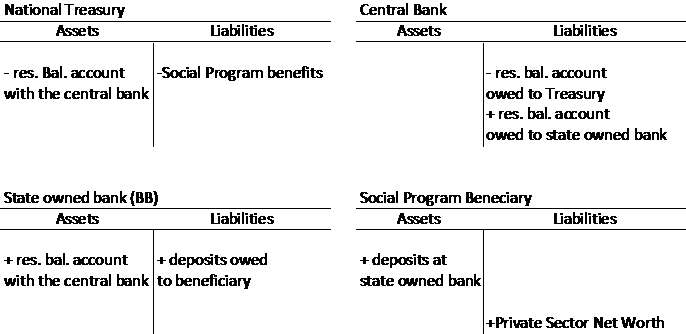Dear Time Magazine Readers, the United States Is Not Insolvent
This is apparently the latest cover of Time magazine:
The idea that the US government or the nation as a whole is “insolvent” has an undying appeal. The fear of (or yearning for) some manner of budget crisis has waned somewhat over the last couple of years (one hopes this is due to the fact that most people alive today have never lived through a period in which the deficit has shrunk so rapidly), but stories like this will never go away.
The 25th Minsky conference wrapped up recently (video of all the speakers is posted here), and in one of the sessions Stephanie Kelton delivered a presentation in which she argued that, in contrast to almost any other area of policy, there is one issue on which Democrats and Republicans agree: a public debt crisis is looming. In addition to some disagreement over when the crisis will strike (hawks: yesterday; doves: in a decade or so), they differ merely on the question of how to solve this perceived problem: by cutting spending or raising revenue. This broader moment of bipartisan consensus, Kelton argued, is tarnished only by being wrong.
Among her efforts to dispel the appeal of the debt crisis narrative, Kelton pointed out that US government deficits are the mirror image of non-government surpluses (domestic private sector surpluses plus current account deficits), with a nod to what Goldman Sachs’ Jan Hatzius once described as “the world’s most important chart.” The upshot, she argued, is that calling for a reduction of public sector deficits in the presence of persistent current account deficits should be understood as calling for a reduction of the private sector’s surpluses. Kelton put together the following chart, which flips the script on the Simpson-Bowles-era discussions of how rapidly we should bring down the budget deficit:
“Ask the same question now. Now the graph doesn’t show the path of projected government deficits, but instead the path of projected non-government surpluses. So the question becomes how rapidly would you like to reduce the non-government surplus? You want to do it really quickly, follow the blue line; just bring surpluses down very sharply. Would you like to reduce the surpluses in the non-government sector more slowly, a more gradual approach. Or would you like to rethink this exercise all together because you think it’s madness that a policy objective is to reduce non-government surpluses? […]
In other words, their red ink is our black ink. And setting out to reduce budget deficits by $4.1 trillion over the next ten years is the same as saying my goal is to reduce the non-government surplus by 4.1 trillion over the next ten years. One might sound reasonable and the other sounds like madness, but it’s the same thing said two different ways.”
Watch her presentation (slides here):
Two other speakers at the conference mentioned a different, perfectly orthodox reason to stop worrying about a US public debt crisis. Even if you’re convinced that a debt ratio of the size predicted by the Congressional Budget Office’s long-run budget forecast represents a threat, there are reasons to doubt that we’re destined to reach that level. continue reading…






 ShareThis
ShareThis